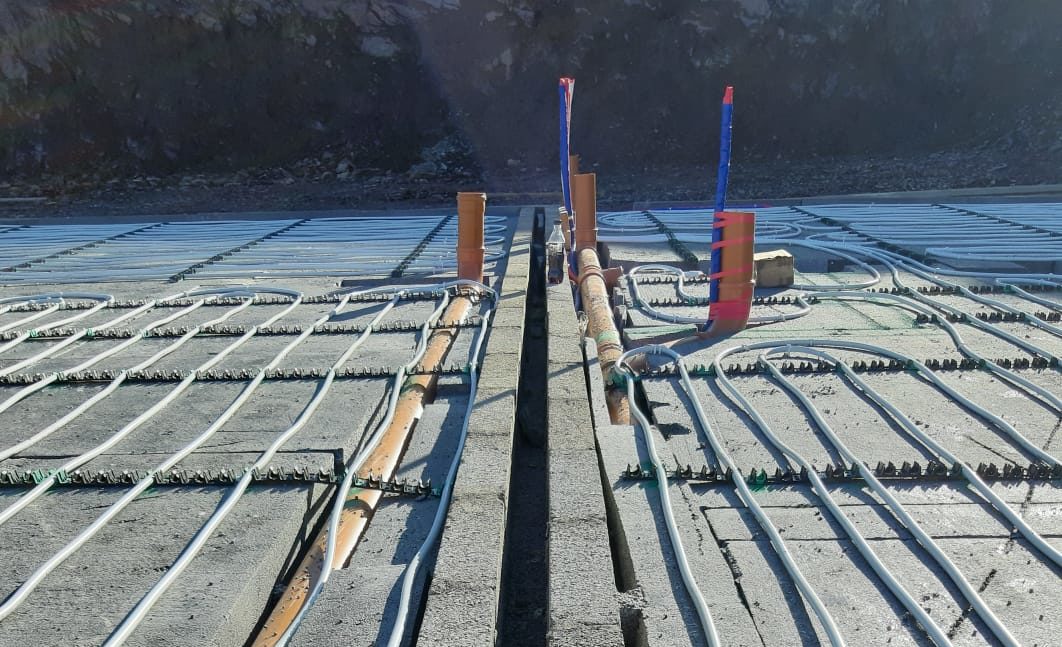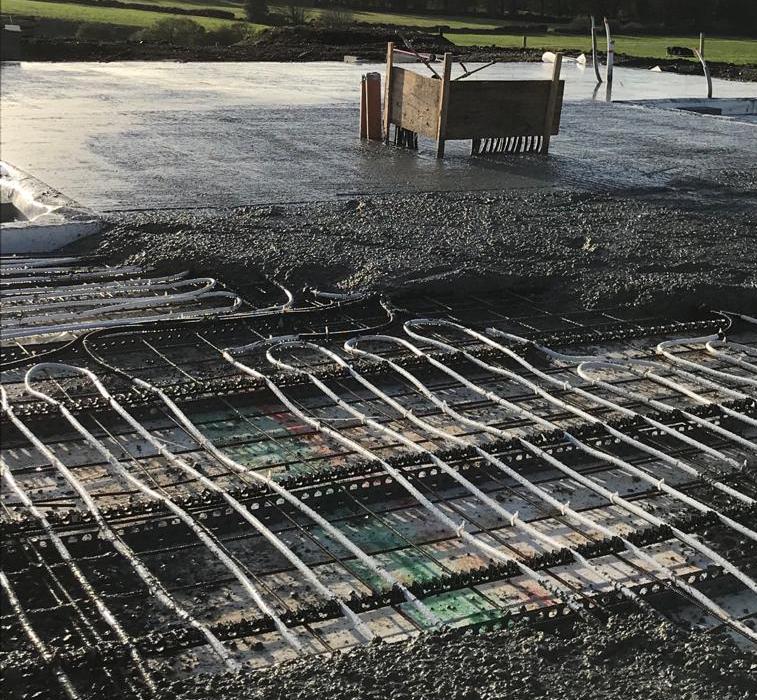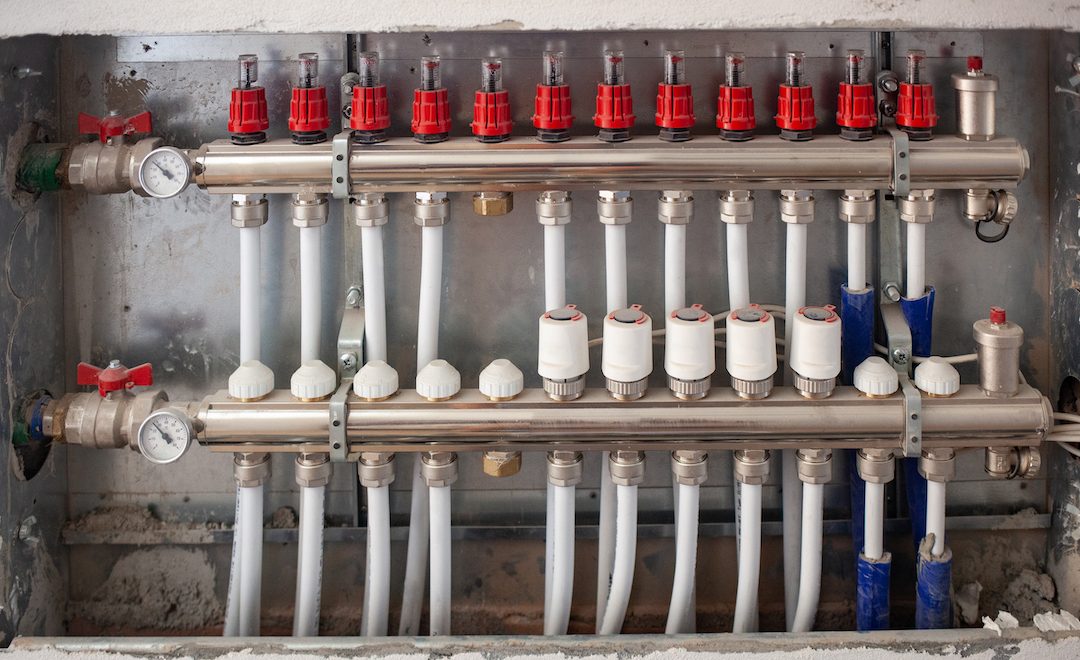
If you’re building a new home or adding an extension, chances are you’ll have to insulate the floor to meet the required building regulations under Part L 2021. Specifically, builders must achieve a U-value of 0.15W/m2K when insulating with an underfloor heating system, or 0.18W/m2K if heating with radiators or forced air, for example.
There are several reasons to choose an underfloor heating system. The main benefits include lower maintenance costs, higher energy efficiency and lower running costs. Along with even temperature and heat distribution, underfloor heating does away with radiators, freeing up space in the home. Most underfloor heating system are compatible with just about all floor types – from hardwood to tile and carpet.
So why choose EPS floor insulation along with your underfloor heating system? Read on to find out!
1. KORE EPS Silver is graphite-enhanced
KORE Floor Insulation is available in two grades, White EPS and graphite-enhanced Silver. KORE’s Silver EPS contains graphite, offering a lower thermal conductivity, making it possible achieve lower U-values with less material. For example, KORE EPS70 Silver can achieve a U-value of 0.15W/m2K with 160mm of insulation (with a perimeter to area ratio of 0.4) – meeting the requirements of Part L 2021 with underfloor heating.
The graphite within KORE EPS Silver reflects and absorb radiant energy, increasing the insulation capacity. While the insulation not only prevents the home from losing heat, it also reflects heat generated from underfloor heating improving efficiency while ensuing the internal temperature of the home stays consistent. In summary, homeowners spend less energy heating the home while allowing the underfloor heating system to perform more efficiently.
2. It makes the installation of underfloor heating easy
Installing KORE Floor Insulation is easy. The boards are manufactured to the specification of each project and can simply be laid down within the perimeter of the ground floor. EPS Insulation boards can also be cut on site without the need for specialised safety equipment, ensuring a snug fit with no gaps in insulation.
Nearly all underfloor heating systems are compatible with KORE Floor Insulation. The underfloor heating pipework can be fixed directly to the insulation board, or to the mesh, and routed to meet the needs of the system. Concrete can then be poured directly on top of the insulation and underfloor heating pipework, freeing up space in the home while offering a very efficient form of heat.
3. Underfloor heating and EPS insulation distribute heat evenly
Most people want a heating system that distributes heat evenly throughout the home, reducing cold areas and the time it takes to heat up large spaces. Underfloor heating along with EPS insulation is the perfect combination. The insulation in the floor reduces heat loss, reflecting the heat towards the area to be heated, while the underfloor heating system provides heat to the entire room which rises from the floor – keeping both feet and the space warm.
Unlike radiators, underfloor heating will heat an entire area of the home at once, ensuring a consistent temperature and even heat distribution. The added benefit of insulation means the heat does not dissipate as quickly, making the system work more evenly and efficiently.
Zoned heating brings the added benefit of allowing occupants to choose which areas of the home to heat, or to set different temperatures for different areas of the house depending on individual needs, as each zone has its own thermostat – further increasing comfort and energy efficiency.
4. Underfloor heating helps control the indoor humidity and air quality
While even heat distribution has comfort and efficiency benefits, it also helps control the humidity within the home. This uniform heat reduces air currents that can often be found with convection-based radiator heating. Heat generated from radiators typically falls quickly to ground level, bringing humidity with the cooling air while allowing the circulation of dust particles.
In simple terms, underfloor heating keeps the air still, which means less drafts and less dust in the air, and a healthier indoor environment all around.
5. Underfloor heating can harness renewable energy technologies
There are two main types of underfloor heating systems available – electric underfloor heating (also known as a dry system) and hydronic underfloor heating (also known as a wet system). The main drawback of electric underfloor heating is that they are powered by electricity, making the running costs significantly more expensive.
Hydronic systems are found more commonly across Ireland and the UK. These systems can use a modern condensing boiler as the heat source, or more environmentally friendly and energy efficient systems like air source heat pumps.
Hydronic systems that make use of a heat pump typically run up to 40% more efficient when compared to an oil or gas-fired boiler. Heat pumps typically only need to heat water found in these systems to 40°C, whereas oil or gas would have a range from 65°C to 85°C. Hydronic underfloor heating systems can also take advantage of solar thermal systems to further reduce energy consumption from the grid.
The ideal combination
Insulation and underfloor heating are the ideal combination when building new, adding an extension or undergoing extensive retrofitting of existing properties, from both a comfort and efficiency standpoint.
KORE Floor Insulation is a high-performance, cost-optimal solution that works perfectly with hydronic systems, complimenting the benefits of underfloor heating while reducing heat loss through the ground floor.



